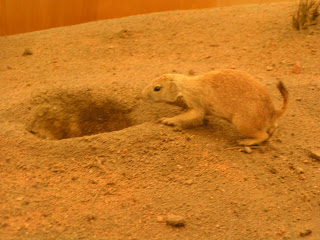Continuing my saga on the trip to the Wichita Mountains Wildlife Refuge in Oklahoma. For starters it was a pretty long (3.5 hours) drive through the prairie lands of North Texas and Southern Oklahoma. The drive was pretty boring except for the colorful spring blossoms that line the highways. There were blue, yellow, pink, and other colored flowers moving in the wind.
After what seemed like an eternity we finally pulled into the Wichita Mountains Wildlife Refuge and were greeted by a large American Bison grazing beside the road. We stopped to take a closer look and get some pictures of the giant beast that was grazing away oblivious of the attention it was getting.
Wild Bison grazing in Wichita Mountains Wildlife Refuge
After spending some time at that site, we moved to the swank, and sprawling visitors center-cum-nature museum. Every wildlife sanctuary, national park I have visited be it in India, Nepal, Bhutan or US has an information center/ museum/ history center meant to provide information about the park's history, geography, wildlife, etc.

A giant mural at the visitor's center
The only difference is that in India the information centers are built with earthy materials like stucco, concrete, and brick and are mostly not air-conditioned. Here the building was built of wood, metal and drywall and of course it is centrally air-conditioned and heated. The natural history museum/ visitors center was one great documentation of the park's history, flora, and fauna. There were two huge stuffed wild bison's welcoming the visitors into the display area. There are numerous other stuffed creatures displayed in almost their natural settings. The museum is pretty interactive and simulated, the small theater showcases films on the night creatures of the park.

Stuffed animals on display

Stuffed animals on display
After spending about 45 minutes (short, we need at least 2.5 hours to see the museum thoroughly) we moved to do a short hike at the Lost Lake area. More tomorrow.















